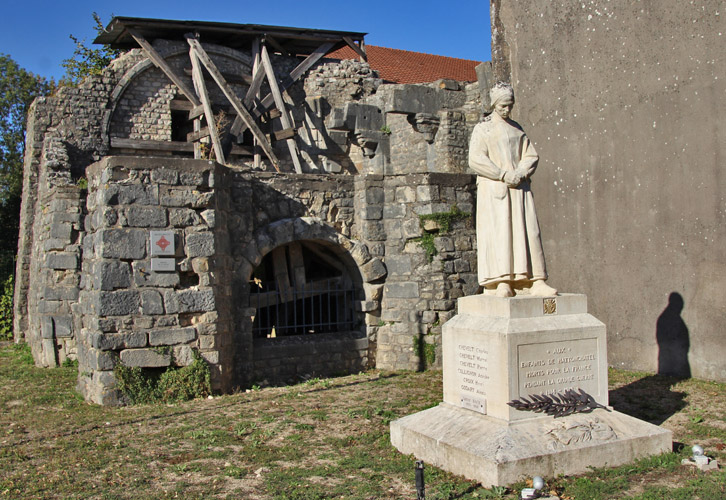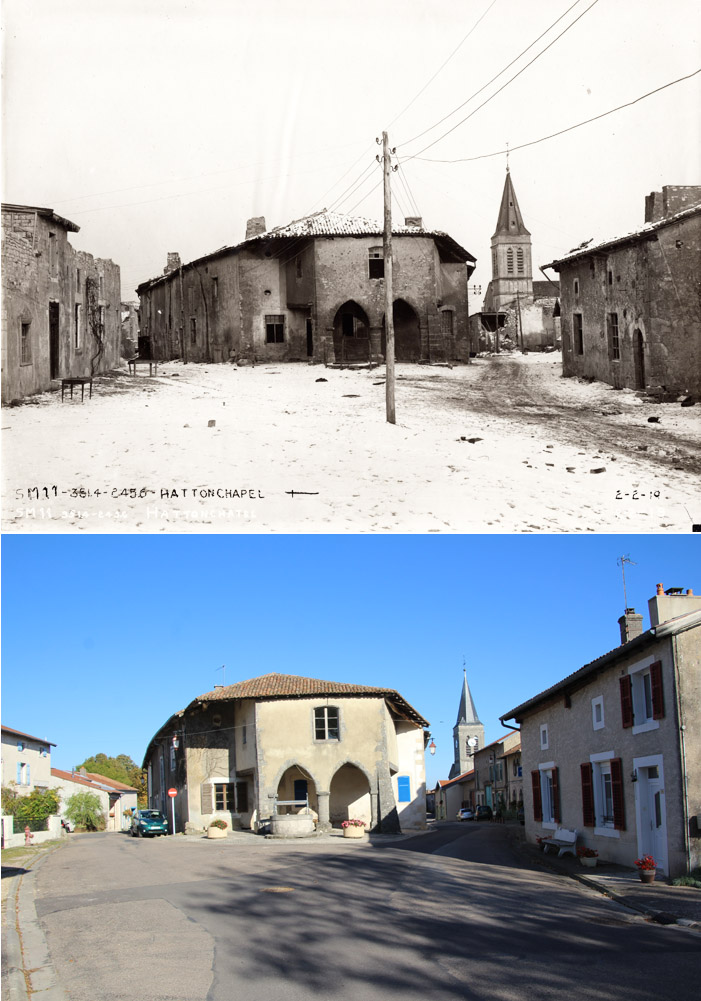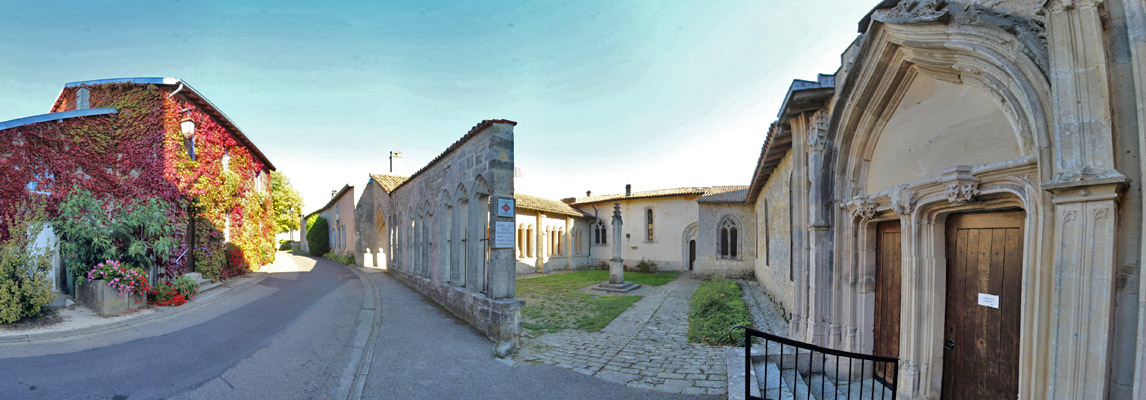St Mihiel - Hattonchatel
On a hill overlooking the battlefield, the town was shelled by the
Americans and set on fire by withdrawing Austrian troops before the
American 26th Division liberated the village. A castle of the
bishops of Verdun was built there in the 800s, and the
Swedes besieged the town in the Thirty Years War, after which it
remained in ruins.
After the Great War, the town was visited by an American, Ruth Isabelle
Skinner, the daughter of a silk manufacturer, who made it her mission
to restore the damaged town, spending a million of her own dollars -
this in a time when a million was real money. Skinner also
encouraged her fellow Americans to assist in the rebuilding of
countless French villages destroyed in the war.

Monument aux Morts
Just beyond the unrebuilt "vaulted house", once part of the town
defenses, there is the village memorial to the local war dead.
Due to Skinner's influence, the war memorial is rare as it
features a female figure in mourning.

Place du Grand Puits
This building, the arcades of which were used as a market, survived the war with little damage.

Gargoyle at Marie


Remembrances of Skinner abound. Passing through the Marie, the
town hall, there is a panoramic view of the battlefield. A
post-war lake was built near Nonsard on ground already swampy when
artillery made things worse. Vigneulles, where the 26th and 1st
Divisions met, is visible at the foot of the hill. Montsec is
also prominent. The memorial at Montsec might have been built at
Hattonchatel except for the height required to provide visibility
over the buildings.


Cloister
Built in the Renaissance over a 9th century church, the rooves of the two churches here were damaged.

Chateau
Destroyed in 1638, the castle remained in ruins into the 1920s.
Thanks to Skinner, the castle was rebuilt and is now a hotel.
Copyright 2010-20 by John Hamill







